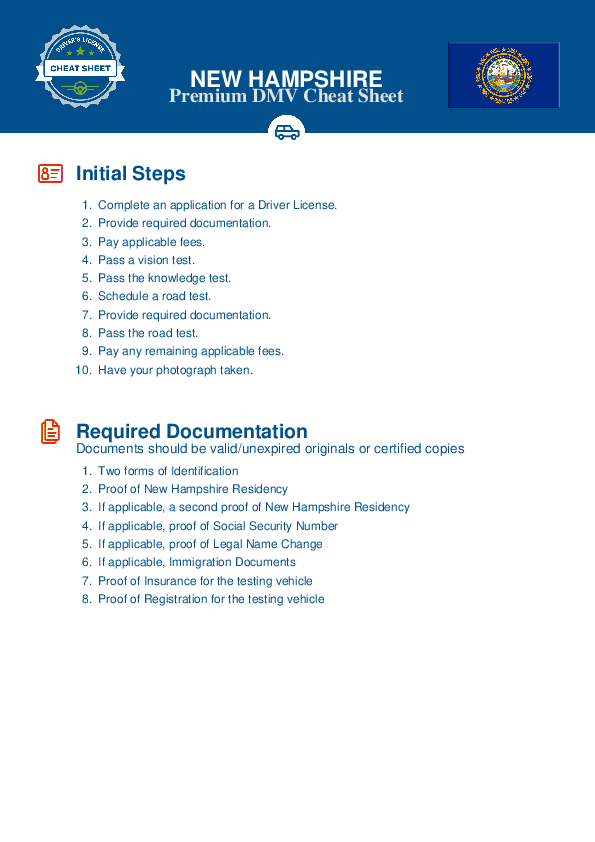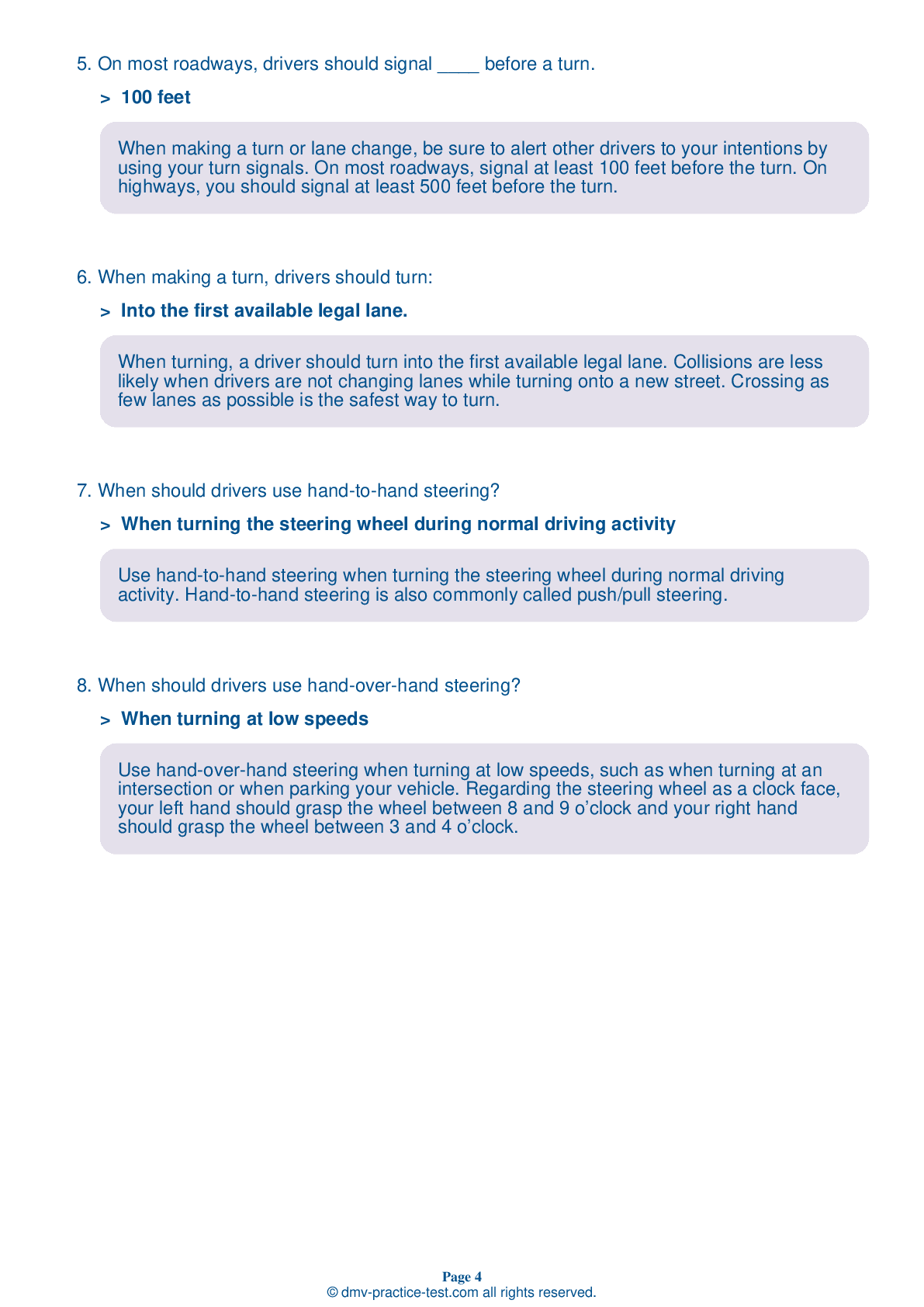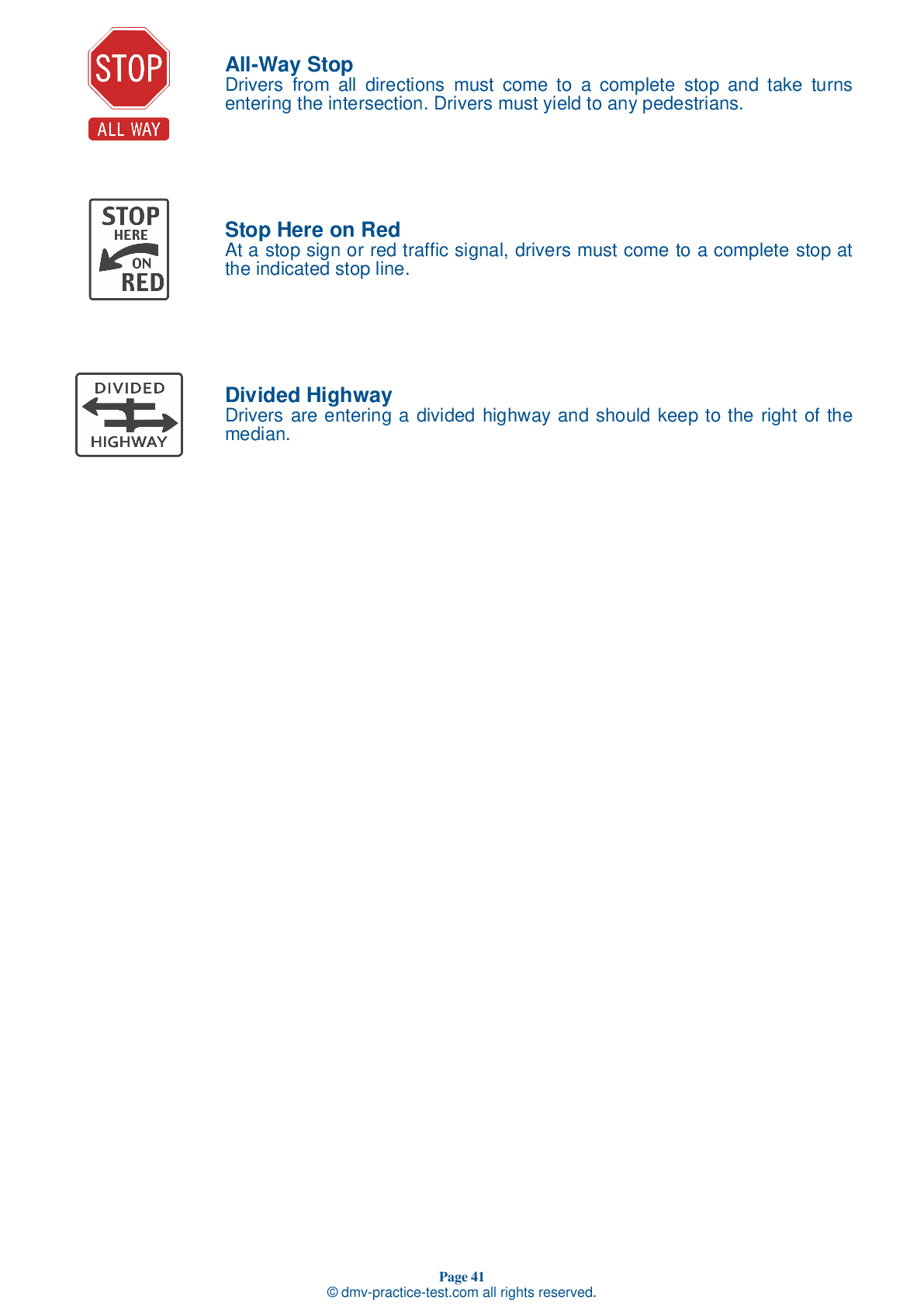FREE New Hampshire DMV Practice Test #10 Page 5 of 5
The DMV practise exams in New Hampshire have been updated for January 2025. It includes questions based on the most important traffic signals and legislation in the New Hampshire Driver Handbook for 2025. To study for the DMV driving permit test and driver's licence exam, use actual questions that are very similar (often identical!) to the DMV driving permit test and driver's licence exam.
Each question on the practise exam has a tip and explanation to help you recall the ideas. Questions about traffic rules, traffic signs, and driving statutes, as well as knowledge from the Driver Handbook, will be included in the written portion of the official New Hampshire DMV test.
You must properly answer 32 of the 40 questions to receive a passing mark. Take this New Hampshire DMV practise exam to help you prepare for your instruction permit or driver's licence.
The DMV exam is offered in a variety of languages.
Using any form of testing help will result in an automatic fail, and the DMV may take further action against your driver's licence, so avoid it.
33 . How can you lower the risk of hydroplaning?
Hydroplaning happens when a vehicle glides on top of a thin layer of water between its tires and the road. Tires with low air pressure or bad tread can increase the risk of hydroplaning. Speeding also increases the risk.
34 . When faced with an oncoming car to the left and a bicyclist to the right, you should:
When there is more than one potential hazard on the road, you should ensure that you only have to deal with one of them at a time. For example, when there is a bicyclist on the right that you want to pass and an oncoming car to the left, you should not try to squeeze between both at the same time. Instead, let the oncoming car pass, and then pass the bicyclist.
35 . Vehicle stopping distances never depend on:
The distance that a vehicle needs to stop depends on the motorist's reaction time, weather and visibility conditions, the vehicle's weight, the conditions of the vehicle's brakes, the condition and type of the vehicle's tires, roadway conditions, and speed.
36 . When the driver behind you wants to pass, you should:
When the driver behind you wants to pass, you should slow down so that there is enough room in front of your vehicle for the other driver to complete their pass. This will allow them to complete the passing maneuver in less time and more easily.
37 . Drivers may not make a right turn on a solid red traffic light when:
You may make a right turn on a solid red signal only if there is no sign prohibiting a right turn on red. It is also a violation of the law to make a right turn on red when a steady or flashing walk signal is being displayed for an intersecting crosswalk, even if there are no pedestrians in the crosswalk. You may make the right turn after yielding to pedestrians and cross traffic in or approaching the intersection.
38 . When exiting a highway, you should slow down:
When exiting a highway, you should get into the exit lane well in advance. Do not begin to slow down until after you have moved into the exit lane.
39 . When you park uphill on a street with a curb:
When parking on an incline where there is a curb, you should turn your wheels sharply to the left, away from the curb. This way, if your brakes fail, your vehicle will not roll into traffic.
40 . Crosswalks are:
Crosswalks exist whether boundaries are marked or unmarked. You must stop behind the crosswalk to allow any pedestrians to cross.
Need Car Insurance? No problem!
Compare the best rates in New Hampshire and find a personalized policy that meets your needs.
1. Are You Currently insured ?
2. Married ?
3. Do you own your Home?
4. Do you have more than 1 car ?
5. Have you or a Family Member Honorably Served in U.S. Military ?
6. Your Name
7. Age
8. Zip code
IMPORTANT REMINDER:Auto Insurance is Mandatory to drive in New Hampshire. Get covered before you hit the road to avoid any fines.
Ranked by best match



